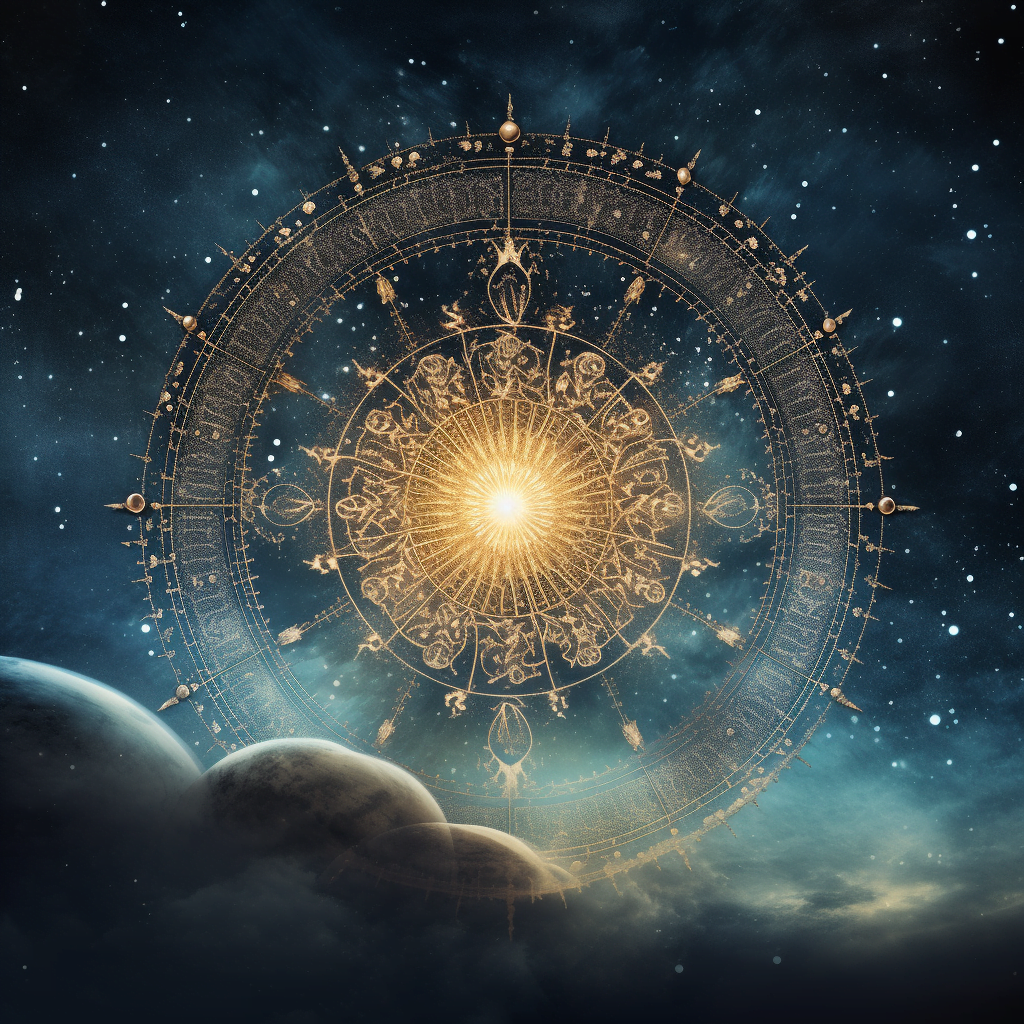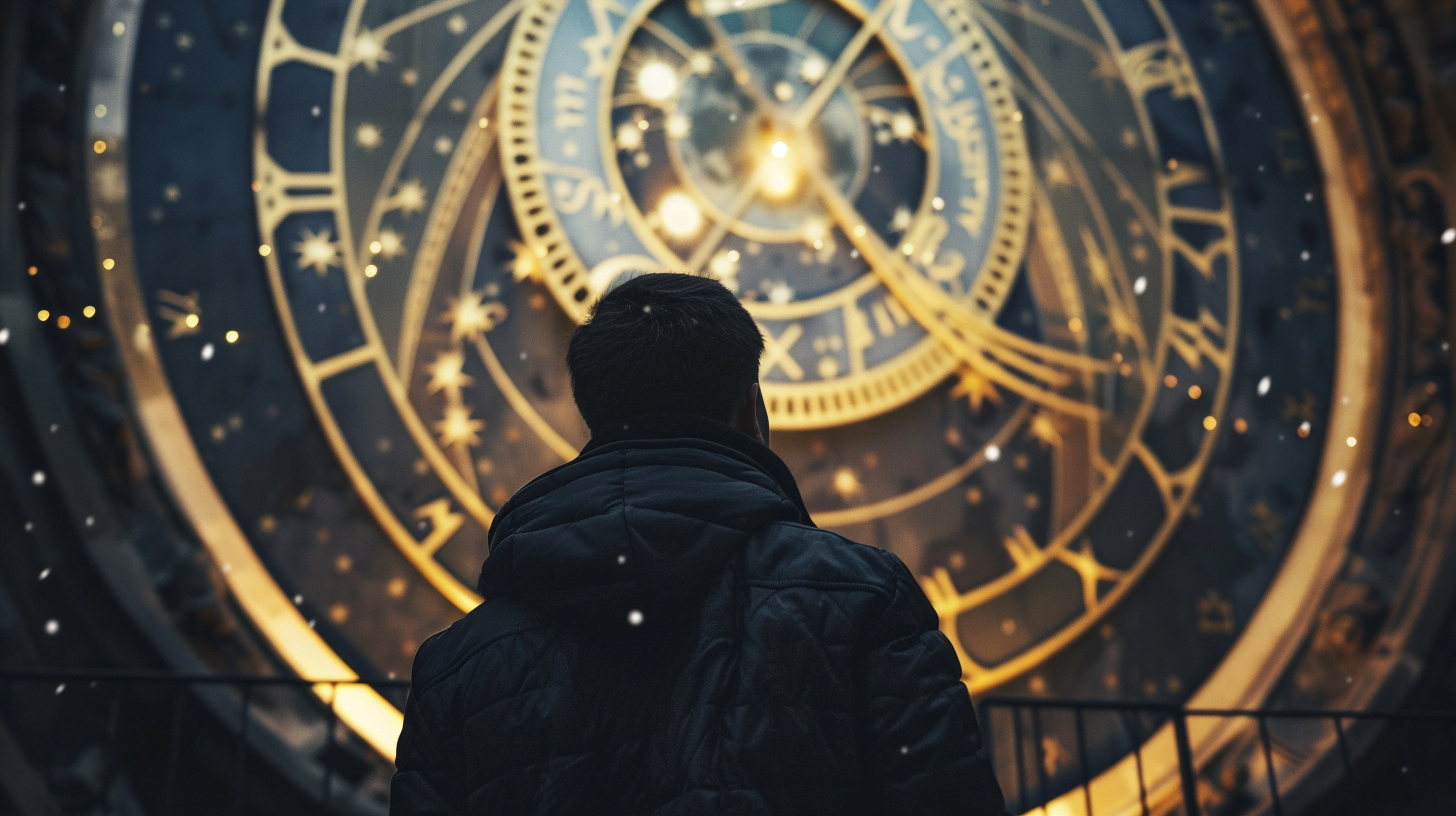In astrology, the term “morning star” refers to the planet Venus when it appears in the eastern sky before sunrise. It is one of the brightest objects visible in the night sky and has been an important cultural symbol for millennia. Let’s explore the deeper significance behind the morning star in astrology. Keep reading for the long answer to What is a Morning Star in Astrology?
The Meaning of Morning Star in Astrology
The morning star is another name for the planet Venus as it cycles through its phases each year. When Venus rises before the Sun and is visible in the east before dawn, it is called Phosphorus, the morning star, or Lucifer (“light-bringer” in Latin).
Seeing Venus as the morning star just before sunrise is considered a highly auspicious sign in astrology. It is associated with attributes like fertility, prosperity, peace, and new beginnings. Venus as the morning star was sacred to ancient goddesses of love and beauty such as Inanna, Aphrodite, and Ishtar.
This visible cycle of Venus established it as a symbol of life, death, and renewal across many cultures. Ancient astronomers were able to predict and observe the predictable cycles of Venus as both morning star and evening star. They used these patterns to mark important religious festivals and agricultural events.
In Greek mythology, Hesiod describes how the goddess Aphrodite was born from the foam of the sea after Cronus castrated his father Uranus, with his severed genitals cast into the ocean. Aphrodite emerged as an adult woman arriving on the shore at Paphos in Cyprus. She has been depicted in famous works of art rising from the sea, being blown towards land by Zephyrus, the god of the west wind.
Aphrodite was the goddess of love, beauty, pleasure, passion, and procreation. She was known for her ability to cause gods and mortals to fall in love and conceive children. As the brilliant morning star, she was associated with fertility and new beginnings.
The Roman counterpart to Aphrodite is the goddess Venus. Venus was revered as the bringer of light, and she gave her name to the morning star. Her cult was tied to gardens, vegetation, and vineyards, linking her to sustenance and abundance. As Lucifer (“light-bringer”), the morning star represents how Venus illuminates the darkness before dawn.
For the ancient Aztecs, the feathered serpent god Quetzalcoatl was closely associated with the planet Venus and wisdom. His name means “feathered serpent” or “plumed serpent”. Legends say Quetzalcoatl resided in the heavens as the morning star. He brought enlightenment to mankind by giving the gift of knowledge to the ancient Aztecs.
In Babylonian mythology, Ishtar was the goddess of love, beauty, sex, desire, fertility, war, combat, justice, and political power. As Venus, she was seen as having two sides – as both the morning star and as the evening star. This dual nature made her especially revered as a complex and influential goddess.
Morning Star in the Natal Chart
In a natal chart, the condition of Venus reveals information about how a person expresses love, relationships, aesthetics, values, and wealth. If someone has Venus as the morning star in their birth chart, it indicates the following:
- Harmonious partnerships, diplomacy, and balance between masculine/feminine energies
- Beauty, charm, and artistic talents
- Material prosperity and comfort
- Romantic idealism and attractiveness
- Strong powers of attraction and manifestation
Having Venus as your morning star suggests you express Venusian qualities like affection, pleasure, and beauty in an outgoing, constructive way. You likely relate to others in a cooperative, socially adept manner. Diplomacy comes easily to you and you seek harmony in relationships.
You value partnerships where there is an equal give-and-take, and you may have an innate sense of fairness. In relationships, you lead with charm, grace and compromise instead of aggression. You have an artistic eye and talent for beautifying your environment. Sensual pleasures like art, nature, and affection fill you with joy.
With Venus as your morning star, you are gifted at bringing people together in loving unions. You make an appealing partner and can attract favorable circumstances and wealth. Yet you are not selfish – you want everyone to experience the beauty and happiness you feel is possible. You live your values externally through building cooperation and equilibrium.
Morning Star Transits
Transits refer to when planets move into different signs and houses in the sky during their orbital cycles. When Venus appears as the morning star by transit, it signals a period of prosperity, optimism, and fulfillment.
It’s considered an auspicious time to begin new ventures, pursue pleasures, deepen bonds, and bring balance to relationships. Venus as morning star helps us initiate actions aligned with stability, harmony, and growth.
For example, when Venus is in the morning sky, it may be a fertile period for creative projects that express beauty, pleasure, or the arts. The energy of Venus lends itself well to producing works that bring more loveliness into the world. During this transit, you may feel particularly inspired in your hobbies, relationships or artistic endeavors.
When Venus arises ahead of the Sun as morning star, it can signify good fortune in financial undertakings. It’s a time when you may experience increased wealth, resources, or prosperity. Beginning important business, investing, or purchasing property under this transit can align you with success.
Venus as lucifer – the light bringer – heralds a time to bring innovative ideas to light. Starting projects, studies, or new phases of life under the glow of the morning star taps into its fertile energy. This transit highlights Venusian activities – love, creativity, beauty, harmony.
Health and relationships also flourish under Venus’ radiance as morning star. It’s an ideal time to begin diets, fitness, and beauty regimes. Coming together in partnership under this transit aligns you with Venus’ blessings. Open your heart and express yourself affectionately while Venus shines her benefic light each dawn.

The Cycle of Venus as Morning Star and Evening Star
Venus cycles between being visible as the morning star and evening star due to its orbits around the Earth and the Sun. Here is a more in-depth look at Venus’ synodic cycle and the meaning of its phases:
Morning Star Cycle
Lasts approximately 9-10 months each cycle. During this phase, Venus appears in the eastern sky before dawn as the bright morning star. This is associated with an outgoing, masculine, expressive energy.
Venus first appears as morning star shortly after its inferior conjunction with the Sun. At this stage, Venus rises and sets before the Sun, becoming visible in the early morning light.
Venus then reaches its greatest eastern elongation – its furthest distance ahead of the Sun in the sky. It rises a maximum of 3 hours and 45 minutes before the Sun. This period marks the peak visibility for seeing Venus as the brilliant morning star.
As the cycle progresses, Venus slowly decreases its elongation from the Sun. It appears progressively lower on the horizon each morning. After about 9-10 months, Venus disappears into the sunrise glow as it moves closer to the Sun.
Invisible Conjunction
Venus disappears from view for around 2 weeks when it transitions from being a morning star to an evening star. This occurs when Venus passes directly between the Earth and Sun at inferior conjunction.
Venus is lost in the Sun’s light at this stage. It transitions from being ahead of the Sun to eventually trailing behind it. This brief invisibility marks a shift in cycles.
Evening Star Cycle
Lasts approximately 9-10 months. During this phase, Venus appears in the western sky shortly after sunset as the evening star. This represents a more internal, intuitive, feminine energy.
Venus first emerges shortly after inferior conjunction, now rising and setting after the Sun. It appears low on the western horizon glowing brightly after sunset.
Venus then reaches its greatest western elongation, when it is furthest distance behind the Sun in our sky. It sets a maximum of 3 hours and 45 minutes after the Sun. This marks peak visibility of Venus as the evening star.
As Venus moves further behind the Sun’s position, its elongation decreases each week. It appears progressively higher in the west after sunset. After approximately 9-10 months, Venus is lost to the sunset glow as it nears superior conjunction.
Invisible Conjunction
Venus disappears for around 2 weeks as it passes behind the Sun at superior conjunction, completing the cycle. It transitions from being an evening star back to heralding as a morning star.
By observing Venus’ complete 584-day synodic cycle and its intricacies, we gain insight into its dualities between morning and evening, external and internal, masculine and feminine. Tracking its cycles in relation to Earth illuminates shifting relationship dynamics.
Contrast with Evening Star
While the morning star represents the more active, expressive, masculine side of Venus, the evening star represents the receptive, mystical feminine side.
As evening star, Venus sets after the Sun in the west and is visible at dusk. The evening star phase is a time to reflect on intimacy, spirituality, and emotional bonds. It is associated with turning inward, contemplation, and slowing down.
During this period, Venus takes on a mysterious,
meditative essence under the cloak of night. The darkness allows a deeper connection to intuition and inner wisdom. There is a quieter, more relaxed energy perfect for self-reflection.
While Venus as morning star facilitates outer achievement and expression, Venus as evening star turns the focus within. It’s a time for regenerating ourselves through simple pleasures instead of seeking stimulation. Evening star energy is subtle, soothing, and sensual.
Venus as evening star also represents a retreat into beauty and imagination. We yearn to feed our souls through music, art, poetry, and fantasy. Instead of material or social pursuits, we crave inner fulfillment. This lunar phase highlights the mystical, romantic side of Venus.
The evening star encourages slowed down sensuality, sensitivity, and gentle bonds. We seek meaningful exchanges that nourish in invisible ways. Venus helps us open to love and intimacy as an inner journey of understanding. Growth is cultivated through patience, caretaking, and deep listening.
While the outward excitement of the morning star catalyzes new connections, the evening star nurtures staple relationships. Its energy is best used for strengthening close ties by addressing underlying needs for security and affection.
Venus as evening star is a time to attract romance and enchantment into our lives through peaceful rituals. Soothing baths, simmering teas, fragrant essential oils, candlelight, dream interpretation – these types of activities invite Venus’s magic during her evening retreat.
Above all, the evening star cycle highlights the importance of self-love. It reminds us how healing Venus’ energy becomes when directed inward to replenish ourselves first. Then we can extend unconditional love outward again each dawn, under her glowing light as morning star.

Deities Associated with the Morning Star
Many cultures around the world have myths and deities associated with Venus as the morning star, due to its brightness and cycles. Here are some examples:
- Ishtar – The Babylonian goddess of love and war. Her story echoes the Venus cycles.
- Lucifer – Meaning “light-bringer”, Lucifer was one name for the morning star in Roman mythology.
- Aphrodite – The Greek goddess of love, beauty, pleasure, passion, and procreation. She was known as the brightest star at daybreak.
- Quetzalcoatl – The feathered serpent god of the Aztecs, associated with learning and wisdom.
Inanna – The Sumerian goddess of love, beauty, sex, desire, fertility, war, justice, and political power. She descended to the underworld as the evening star.
Lakshmi – The Hindu goddess of light, beauty, good fortune, power, and wealth. Lakshmi’s blessings are invoked by the morning star.
Janus – Some scholars link the Roman god Janus, opener of doors and gates, with the morning star. Janus oversaw all beginnings.
Tlahuizcalpantecuhtli – The morning star Venus was known as the guide to the underworld for the Aztec god of the dawn.
Al-Uzzá – Pre-Islamic Arabian goddess associated with the planet Venus as both morning star and evening star.
Dawn Bringer – The morning star Venus was personified as a deity known as Dawn Bringer in some Near Eastern religions.
Across cultures, Venus consistently represented feminine divinities who governed love, sex, beauty, fertility, prosperity, and war. Her cycles captured the arc of rebirth after darkness.
Morning Star in Pop Culture
The morning star has captured creative imaginations for centuries and appears frequently in books, song lyrics, art, and films.
A few examples include:
- Paradise Lost by John Milton – Referring to Lucifer, the brightest angel who fell from heaven
- The Lord of the Rings – Eärendil carries the morning star across the sky in a flying ship
- The Bible – “I, Jesus, am the root and descendant of David, the bright morning star.” (Revelations 22:16)
- “Moonage Daydream” by David Bowie – “I’m an alligator, I’m a mama-papa coming for you, I’m the space invader, I’ll be a rock ‘n’ rolling bitch for you.”
- Sailor Venus – A character in the manga/anime series Sailor Moon. Her powers are love based and she is the ruler of the morning star Venus.
- Hesperus – The evening star personified in Greek mythology. Hesperus was the son of Eos (Dawn) and brother of Phosphorus (the morning star).
- Lucy in the Sky with Diamonds by The Beatles – Interpreted as referencing LSD, but may be based on Lucifer the morning star shining like a diamond.
- House of the Rising Sun – A folk song referring to a New Orleans brothel, implying Venus rising ahead of the Sun.
- Starry Night by Vincent Van Gogh – His iconic painting includes Venus shining brightly before sunrise.
Across mediums, the morning star encapsulates themes of contradictions – darkness and light, evil and good, femininity and masculinity. It evokes dichotomy of human nature under the heavens.
Key Takeaways
In astrology, the morning star represents the planet Venus appearing in the east before sunrise. It signals qualities like fertility, peace, prosperity, and new beginnings.
Seeing Venus as your morning star indicates harmonious relationships, beauty, and material abundance. Morning star transits are considered fortuitous times to begin ventures aligned with Venusian principles of love, connection, and stability.
By observing Venus’ entire synodic cycle, we gain deeper insight into shifting tides in all relationship matters – romantic, friendly, financial, and spiritual. The interplay between the morning star and evening star phases of Venus help illuminate our path forward.
Across cultures and millennia, Venus as the morning star has maintained symbolic meaning related to its visibility, cycles, and astrological influence. It bridges darkness and light, death and rebirth. The morning star ushers in the possibility of hope and happiness after a long night.



